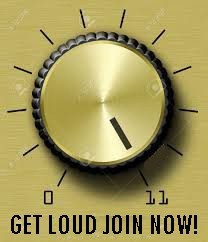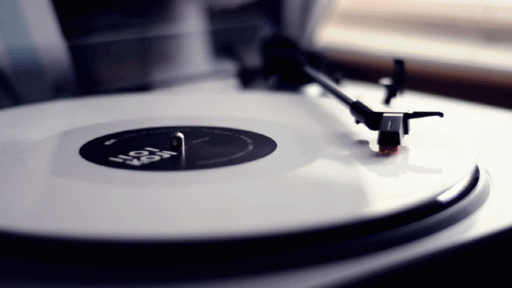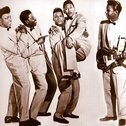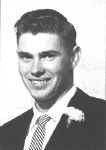Contact: Director@eceventsnow.com
This RnR History page is a work in progress. Currently it covers pertinent RnR History up to 1960. We're working on the 1960's & 70's and beyond and are continuously updating and adding to this platform creating a new, flowing history as an educational and promotional tool for Rock'n'Roll Music and Culture.
-------------------------
Below is a Chronological History
of Rock'n'Roll Music and Culture
Before we can start this history, it has to be mentioned that the roots of Rock'n'Roll music came from the earliest of African slaves who brought with them the drum beats and 'call and response' chants from their native African tribes and villages. This eventually evolved into the church Gospel music enjoyed by slaves on Sundays when they were allowed to worship. After the abolition of slavery and the loosening of social control over black Americans, independent musicians started adapting their gospel songs and beats along with European classical and Polka influences to create what would become "Rhythm and Blues" and "Jazz Orchestra". They created this music using whatever instruments they could get their hands on, usually a piano, banjo or Spanish acoustic guitar. Rock'n'Roll was born from these early beginnings.
1920 to 1936 - The Early Blues
The early Blues guitarists take things into their own hands. Big Bill Broonsy, Blind Lemon Jefferson, Huddie William 'Lead Belly', Alger 'Texas' Alexander, Lightnin' Hopkins and of course Robert Johnson all performed and recorded songs during this era that would later be replicated by future Rock'n'Roll'ers.
1925 to 1931 - Need for a Louder Guitar is Realized
As popular bands start incorporating drums and the bigger, louder horns into their music styles the classic acoustic guitar can't be heard and early modifications prove to be ineffective.
1931 - The First Effective Electric GuitarAn electrical engineer, Adolph Rickenbacker and a musician, George Beauchamp team up to produce the first cast aluminum versions of the electric lap steel guitar, also known as the "frying pan". This leads to electronic wooden hollow body guitars which can be amplified through loud speakers.
Jan 4, 1936 - First Billboard Sales Chart
Billboard magazine releases its first record sales chart, the Hit Parade.
1938 - Jazz Song uses the words "Rock" and "Roll"
Jazz singer Trixie Smith records "My Daddy Rocks Me (With One Steady Roll)"
Sept 1943 - Syd Nathan Founds King Records
Syd Nathan founds King Records in Cincinnati.
1946 - Race Records Produced
King Records begins producing "race records", music produced primarily by and for African-Americans.
July 5, 1946 - The 'Bikini' Bathing Suit is Created
French engineer Louis Réard introduced the modern bikini, modeled by Micheline Bernardini, borrowing the name for his design from the Bikini Atoll, where post-war testing on the atomic bomb was happening.
1946 - The First Rock'n'Roll Song is Recorded
Although this is a disputed subject, we here at The Rock'n'Roll Resurrection Society declare the 1946 recording titled "That's All Right Mama" by Arthur 'Big Boy' Crudup as the first Rock'n'Roll song ever recorded. Why? Because he composed the song, performed the vocals and guitar on the recording and it's the first song that features lead guitar riffs in the middle of the arrangement with a Rockin' drum back beat.
https://www.youtube.com/watch?v=uxHQUvCkV20&list=RDuxHQUvCkV20
June 1948 - The first 33 1/3 rpm record
Columbia Records releases the first LP (Long Play) album, a record that can hold up to 20 minutes of music per side, which allows the listener to sit back and relax for a good while before he or she has to flip it to the other side.
1948 - The First Rhythm & Blues Songs with "Rock" in the Tittle
Wynonie Harris records "Good Rockin' Tonight" on King Records and Wild Bill Moore records the song "We're Gonna Rock, We're Gonna Roll". Both are also regarded by some to be the first Rock'n'Roll song recorded. (see 1946)
Jan 1949 - The first 45 rpm Single
RCA Records introduces the first 45 rpm single, a seven-inch disc that can fit approximately one song per side, a perfect fit for the vinyl record jukebox that will become a staple in restaurants, soda shops, pool halls, and other teen hangouts in the 1950s.
Nov 19, 1949 - Jerry Lee Lewis Debut
Fourteen-year-old Jerry Lee Lewis makes his performing debut, singing at the opening of a Ford dealership in the town of Ferriday, Louisiana.
Dec 10, 1949 - Fats Domino Records with Imperial
Fats Domino records several tracks for Imperial Records, including "The Fat Man," which is regarded by some as the first Rock'n'Roll record. (see 1946)
1951 - The Catcher in the Rye Published
J. D. Salinger publishes The Catcher in the Rye. The novel's main character, Holden Caulfield, will become a popular icon for disillusioned teens seeking to rebel against a society full of "phonies." Three decades later, Mark Chapman will claim the book inspired him to murder Beatles singer John Lennon.
Jan 1951 - First Deputed Rock'n'Roll Song Released
Jackie Brenston and Ike Turner's Kings of Rhythm record "Rocket '88," a chart-topper, and later considered by some to be the first Rock'n'Roll record, is released. (see 1946)
Feb 1951 - Racy Lyrics Banned
The Dominoes' record, "Sixty Minute Man," breaks onto the rhythm and blues charts, quickly becoming a #1 hit. With its pornographic lyrics—"I rock 'em, roll 'em all night long, I'm a sixty-minute man"—the song is soon banned on many radio stations. Later it will also be cited as one of the first Rock'n'Roll songs ever recorded. (see 1946)
1951 & 1952 - First Solid Body Electric Guitars
Radio repairman Leo Fender and musician Doc Kaufman produce the better sounding version of the solid-body electric guitar. Their design first named "The Esquire" is fairly simple and can be inexpensively produced. It becomes the first relatively cheap electric guitar on the market. At about the same time, like Leo Fender, after a decade of building his own hollow bodied guitars, Les Paul teams up with the guitar innovators at Gibson Instruments to build their first prototype. The Les Paul model is born and like the Fender models, it becomes pivot-able in defining the next generation of Rock guitarists.
Feb 1952 - Sun Records Launched
Sam Phillips launches Sun Records, which will become the home for artists such as Elvis Presley, Jerry Lee Lewis, and Johnny Cash.
Mar 21, 1952 - First Rock and Roll Concert
Alan Freed, a Cleveland disc jockey known as "Moondog" and thought by some to have coined the term "Rock'n'Roll," organizes a concert at the Cleveland Arena. It attracts nearly 25,000 young people, mostly African-Americans. The show, featuring artists such as the Dominoes and Paul "Hucklebuck" Williams, is shut down early when thousands of ticket-holders who are denied entrance become unruly. The event will later be called the first Rock'n'Roll concert.
June 1952 - Buddy Holly's First Performance
17 year old Charles Hardin Holley performs on local television in Lubbock, Texas and later that year he forms his first band "Buddy & Bob" with his friend Bob Montgomery.
Jan 1953 - First White Rock'n'Roll Song
Bill Haley records "Crazy Man Crazy," considered by some to be the first Rock'n'Roll hit by a white artist.
Jul 18, 1953 - Elvis Presley Discovered
Eighteen-year-old Elvis Presley walks into Sun Records Studio to record two songs for his mother as a birthday gift. The label's office manager is impressed by his vocals.
1954 - Fender Stratocaster Guitar
Leo Fender introduces a new, sleeker version of the Fender electric guitar—the Stratocaster—revolutionizing the sound of rock. The Fender Stratocaster will become the guitar of choice for such legends as Jimi Hendrix and Eric Clapton.
Jan 1954 - Teenager Appeal
Hank Ballard and the Midnighters record "Work with Me Annie," a song that appeals to American teens of all races.
Jan 1954 - Shake, Rattle and Roll
Bill Haley and the Comets record an energetic dance tune, "Shake, Rattle, & Roll," a cover of a Joe Turner recording.
Jul 19, 1954 - First Elvis Single
Sun Records releases the first single by Elvis Presley, "That's All Right (Mama)" and B-side "Blue Moon of Kentucky". Both tracks are covers; "That's All Right" is a song by bluesman Arthur "Big Boy" Crudup, while "Blue Moon of Kentucky" is a bluegrass ballad by Bill Monroe. Presley's renditions become instant hits in Memphis, Tennessee, Presley's hometown. Elsewhere, however, the record receives mixed reviews.
Aug 1, 1954 - Moondog Jubilee
Alan Freed, now working as a disc jockey in New York, throws the "Moondog Jubilee of Stars Under the Stars" at Ebbets Field in Brooklyn, New York. The performing line-up includes black artists Fats Domino and Muddy Waters.
1955 - James Dean and Rebel Without A Cause
The film Rebel Without A Cause, starring James Dean, becomes a nationwide hit, especially with teenage audiences. The popularity of the film attests to the deep relationship between authority and rebellion in post-World War II America—a relationship that will help speed the rise of Rock'n'Roll music.
1955 - Blackboard Jungle
Blackboard Jungle, a film about a teacher at an inner-city school, features Bill Haley and the Comet's "Rock Around the Clock" in the opening credits. The film helps boost the popularity of Rock'n'Roll among teens, but, for the rest of the population, it raises fears that Rock music is related to juvenile delinquency.
Jan 1955 - Early Rock Legends
Elvis Presley, Little Richard, and Chuck Berry each debut on the pop charts.
Jan 1955 - Alan Freed’s Rock‘n'Roll Show
DJ and promoter Alan Freed organizes a "Rock'n'Roll Party" concert, which draws over 15,000 people—black and white—to see artists including Fats Domino and Joe Turner. Freed had originally advertised his concert events using his moniker, "Moondog," but another performer with the same name forced him to choose a new title for his parties. "Rock'n'Roll" seemed like a fairly sexy alternative. It is this poster from which we declare to be the correct spelling and presentation of "Rock'n'Roll".
Feb 15, 1955 - Little Richard on Specialty Records
Little Richard sends a demo to Specialty Records. He is offered a contract the following month.
Apr 14, 1955 - Fats Domino Ain’t That a Shame
Fats Domino records "Ain't That a Shame," which will become the first of dozens of hits for the singer that cross over from the R&B charts to the pop charts.
May 13, 1955 - Elvis’ Female Fans
After a concert in Jacksonville, Florida, Elvis Presley is accosted by droves of young female fans who attempt to rip off his clothes. It is rumored that Presley, himself, instigated the riot by teasing his female fans with the invitation, "Girls, I'll see you backstage." The riot causes outrage in the South.
May 21, 1955 - Charles Edward Anderson "Chuck" Berry
Seasoned guitarist/singer Chuck Berry records "Maybellene" on Chess Records and it goes on to sell over a million copies.
1955 - Buddy Holly Opens For Elvis
"Buddy & Bob" open for Elvis three times in 1955 and solidifies Holly's desire to pursue a career as a Rock'n'Roll'er!
Nov 20, 1955 - Elvis Leaves Sun Records
Elvis Presley leaves Sun Records, which sells Presley's recording contract to RCA for $35,000, approximately $268,000 in 2007 dollars—quite a bargain! His first RCA album is released March 23rd, 1956.
Jan 14, 1956 - Little Richard Rocks!
Little Richard's song "Tutti-Frutti" hits the pop charts. Elvis Presley will perform the song on national television in the following month and in April, Richard's "Long Tall Sally" hits #6 on the Billboard charts.
Jan 27, 1956 - Elvis Heartbreak Hotel
Elvis Presley records his first single for RCA, "Heartbreak Hotel." The song will become the first of many #1 hits for Presley and will help popularize Rock'n'Roll.
Sep 1956 - Jerry Lee Lewis at Sun Records
Jerry Lee Lewis travels to Memphis to audition for Sun Records. The label's engineer advises Lewis to try his hand at rock and roll. Two months later, he will record his first record for Sun.
1956 - John Lennon and The Quarrymen
John Lennon receives his first guitar as a gift from his mother. He will soon form his first band, the Quarrymen.
Jan 1957 - Congress Considers Censoring Lyrics
In light of recent controversy over "obscene" music, the U.S. Congress considers legislation that would require song lyrics to be screened by a review committee before sale.
Jul 6, 1957 - John Lennon Meets Paul McCartney
At a Quarrymen gig in Liverpool, John Lennon meets Paul McCartney. Lennon invites McCartney to join his group, the Quarrymen.
Jul 28, 1957 - Jerry Lee Lewis on Steve Allen Show
Jerry Lee Lewis's "Whole Lotta Shakin' Goin' On" blasts to the top of the pop charts. Lewis is invited to appear on the Steve Allen Show where, in a characteristically outrageous performance, his piano bench is tossed across the stage.
Aug 5, 1957 - Dick Clark and American Bandstand
American Bandstand, a television show hosted by Dick Clark, premiers nationally on ABC. Each episode features teens dancing to popular hits and at least one live performance by a Rock'n'Roll or rhythm and blues artist.
Sep 1, 1957 - Jimi Hendrix Attends Elvis Presley Concert
A fourteen-year-old Jimi Hendrix attends an Elvis Presley concert at Sicks Stadium in Seattle.
Nov 3, 1957 - Jerry Lee Lewis Great Balls of Fire
"Great Balls of Fire," a Jerry Lee Lewis smash, blazes up the charts and becomes Sun Records' best-selling record.
July 6, 1957 - Chuck Berry Tops Charts Again
Chuck Berry's song, "Sweet Little Sixteen," reaches #2 on the pop chart. The song will become his biggest rock and roll hit.
Oct 19, 1957 - Richard Valenzuela's First Performance
Soon to become Ritchie Valens, at age 16, he performs for the first time with a local band he joined called The Silhouettes.
Feb 1958 - George Harrison Joins The Quarrymen
After McCartney's constant advocacy, Lennon allowed the recently turned fifteen-year-old Harrison to join The Quarrymen.
Mar 24, 1958 - Elvis Drafted into Army
Elvis Presley is inducted into the U.S. Army. He will serve in Germany from October 1958 to March 1960.
Mar 28, 1958 - Jerry Lee Lewis Burns Piano
During the opening night of a tour promoted by DJ Alan Freed, Jerry Lee Lewis is involved in a dispute with Chuck Berry over the line-up. Enraged that he had not been chosen to perform last, he torches his piano during his set-closing number, "Great Balls of Fire."
May 17, 1958 - Little Richard Good Golly Miss Molly
Little Richard's smash hit "Good Golly, Miss Molly" sails up the pop charts, reaching #10. All the while, Richard has vowed to leave the rock and roll life for religion.
May 31, 1958 - Jerry Lee Lewis Marries Teen Cousin
Jerry Lee Lewis is forced to end a British tour when fans learn of his marriage to a teen cousin. He returns to the U.S.where the controversy dogs him for many years.
June 23, 1958 - James Marshall Hendrix First Guitar
At about age 15 James Hendrix receives his first guitar, a second-hand, acoustic instrument purchased by his father for $5. Realizing his son's connection to his guitar, at age 17 he buys young James a new Supro Ozark for $89. The Supro was stolen from him the following year so he then bought a used Dan Electro Standard.
July 1958 - Yakety Yak (don't come back)
The Coasters record "Yakety Yak," which will shoot up the pop chart and become one of their biggest hits. This was written by the songwriting team of Jerry Leiber and Mike Stoller, who had written Elvis Presley's hits "Hound Dog" and "Jailhouse Rock". In the song, a kid is being scolded by his parents for not doing his chores. There are lots of social implications that can be read into this song, which was written by 2 Jewish men and sung by an irreverent black vocal group.
Feb 3, 1959 - The Day the Music Died
After the Empire of Japan attacked the United States at Pearl Harbor, then President Roosevelt stated that Dec 7th 1941 would be 'a date which would live in infamy'. For Rockers, February 3rd, 1959 is Rock'n'Roll's date which will live in infamy.
In a mere 21 months from the release of his first single "That'll Be the Day", Buddy Holly and his Crickets hit and stayed on the charts with such hits as "Peggy Sue", "Not Fade Away", "Oh Boy" and later recorded with The NBC Symphony Orchestra producing the first Rock'n'Roll song with symphonic strings "True Love Ways". Teenagers John Lennon and Paul McCartney saw Holly for the first time at the London Palladium. The two had recently met and begun their musical association. They studied Holly's records, learned his performance style and lyricism, and based their act around his persona. Inspired by Holly's insect-themed Crickets, they chose to name their band "The Beatles". Lennon and McCartney later cited Holly as their main influence. Unhappy with the inaccuracies of the movie "The Buddy Holly Story" starring Gary Busey, Paul would later make a more accurate documentary titled "The Real Buddy Holly Story".
Mexican American Richard Steven Valenzuela was a 17 year old guitarist and singer raised near Los Angeles, California. "Ritchie Valens" was also experiencing a meteoric rise in Rock'n'Roll popularity. Four of his songs charted in 1958 including "Come On, Let's Go", "Donna" about his real life sweetheart, "We Belong Together" and a song derived from a Mexican folk tune called "La Bamba" which cemented him as the Godfather of Chicano Rock. He developed a fear of flying when two small planes collided and crashed on his school playground killing some student friends, yet he had to overcome his fears when he needed to travel to support his rising music career.
At 29 years old, Jiles Perry Richardson Jr. was an American musician, songwriter, and disc jockey whose big rockabilly look, style, voice, and exuberant personality made him an early Rock'n'Roll Star dubbed "The Big Bopper". He is best known for his 1958 recording of "Chantilly Lace" yet was quite an interesting artist and character who led a full life from school football, to radio disc jockey, husband and father, to Corporal as a serviceman in the Army and back to Beaumont, Texas to continue his work in radio. Remarkably, he is credited as creating the first music video when he made a short film of himself singing and playing guitar. Richardson was mainly a prolific song writer penning songs that would later become hits such as George Jones' first number 1 song "White Lightning" and Johnny Preston's "Running Bear" which also hit number 1 for three weeks in 1960. Richardson was alive when the song was recorded and sang background vocals. He had 20 new songs he planned to record when the 1959 'Winter Dance Party' tour was over.
Buddy Holly, Ritchie Valens, and the Big Bopper were three of the acts performing on that 1959 'Winter Dance Party' tour along with Dion & the Belmonts. It was an ill advised tour of mid-western states including Wisconsin, Minnesota, Iowa and North Dakota with temperatures dropping below zero and all the acts traveling the short distances between shows on a drafty bus whose heating system was broken. Holly wouldn't have joined the tour at all if he didn't need the money. At the time he was in a dispute with his former manager, Norman Petty, as Petty was with-holding royalty checks from Holly and the Crickets. Valens and Richardson were happy to jump on the tour as their stardom was just rising. The first 10 days of the tour were rough and extremely cold. By the 11th day Holly's drummer had quit because of frostbite in his feet and Buddy too was frustrated with conditions. He chartered a small plane and pilot, Roger Peterson, to fly he and remaining band mates Waylon Jennings and Tommy Allsup to Fargo, North Dakota, the next stop on the tour. After the show on February 2nd at The Surf Ballroom in Clear Lake, Iowa, Holly found out Jennings gave his seat on the plane to Richardson who was suffering from the flu and Allsup lost his seat in a friendly coin toss to Valens. Upon hearing that his band mates had given away their plane seats Holly joked, "Well, I hope your ol' bus freezes up again." Jennings jokingly replied, "Well, I hope your ol' plane crashes." Of course those words would haunt Jennings for the rest of his life as shortly after takeoff, for unknown reasons other than slightly bad weather, the plane crashed at full speed into a cornfield outside of Mason City, Iowa. All four passengers are killed instantly devastating young Rock'n'Roll fans across the nation and around the World.
-----------------------------------------------------------------------------
The 60's Start off a Rockin' and a Rollin' and End in a Psychedelic Purple Haze!
Pilot Roger Peterson, 21, a Dwyer Flying Service employee, was flying the plane. Owner Jerry Dwyer disputes the claim that the crash was pilot error or bad weather.







































































